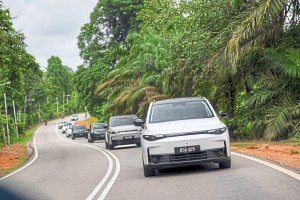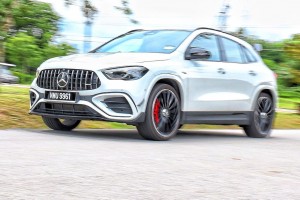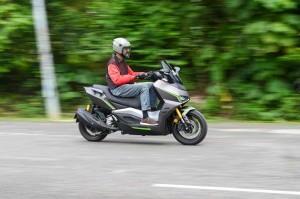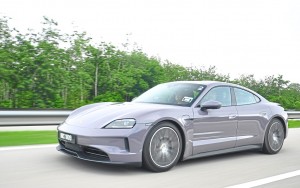LOS ANGELES: Hyundai has launched its all-new 2021 Elantra and Elantra Hybrid at The Lot Studios in West Hollywood.
The 2021 Elantra features Hyundai’s latest Sensuous Sportiness design identity and hybrid electric vehicle technology.
The new Elantra Hybrid has a 1.6-liter GDI Atkinson-cycle four-cylinder engine, which combines with the electric motor to deliver a total system output of 139hp and up to 264Nm of torque.
This engine mates with Hyundai’s quick-shifting, six-speed, dual-clutch transmission – providing a more dynamic and engaging driving experience.

The high-efficiency electric motor has an electric only driving mode that delivers instantaneous torque at low speeds, with available power-assist at higher vehicle speeds.
The 2021 Elantra Hybrid is projected to have a fuel economy rating of 21.25km per litre.
Meanwhile, the non-hybrid Elantra variants offer the 2.0L MPI Atkinson Cycle engine with 147hp @ 6,200rpm and 179Nm of torque @ 4,500rpm.
These models use an Intelligent Variable Transmission (IVT) which takes advantage of a chain-design belt that improves fuel efficiency by an additional 1.2 percent.
Hyundai’s IVT shift response is said to closely replicate automatic transmission step shifts.

Thanks to Hyundai’s third-generation vehicle platform, the new Elantra weighs less, has better fuel economy and is stronger compared to the previous generation.
This platform also allowed engineers to lower Elantra’s center of gravity for more agile handling.
In the event of a collision, this platform improves safety because it uses a multiload path structure.
To transform the 2021 Elantra into its new four-door-coupe look, Hyundai engineers and designers had to make it longer, lower, and wider compared to the sixth-generation model.
The 2021 Elantra has more front headroom and the same amount of rear headroom as its predecessor.
The longer wheelbase also provides a best-in-class 38 inches of rear legroom and the wider track width means improved shoulder room in the front and rear.

There are two 10.25-inch screens all under one piece of glass. The cluster has different views: utility, driver assistance and navigation.
Dual Bluetooth support is also available, so two devices can be paired at the same time—one for phone calls and one for streaming audio.
Safety features include:
- Forward Collision-Avoidance Assist (FCA) with Pedestrian Detection uses the car’s front-facing camera to help detect an imminent collision with a vehicle or pedestrian and avoid impact or minimize damage by braking automatically
- Lane Keeping Assist (LKA) helps prevent accidental lane departure by sensing road markings, automatically steering the car if necessary
- Lane Following Assist (LFA) may automatically adjust steering to help keep the vehicle centered in its lane of travel. LFA can help keep the vehicle centered on both highways and city streets.
- High Beam Assist (HBA) eliminates the need for drivers to manually switch high beams on and off at night
- Driver Attention Warning (DAW) system that monitors a spectrum of driver-related characteristics to help detect driver fatigue
- Rearview camera with dynamic guidelines

It is now known that a performance-oriented N Line variant will join the next-generation Elantra sedan range, as a performance teaser was shown as the end of Hyundai’s livestream event.
There is a good chance that this N Line variant will use the turbocharged 2.0-litre 275hp four-cylinder engine from the I30 N.


















